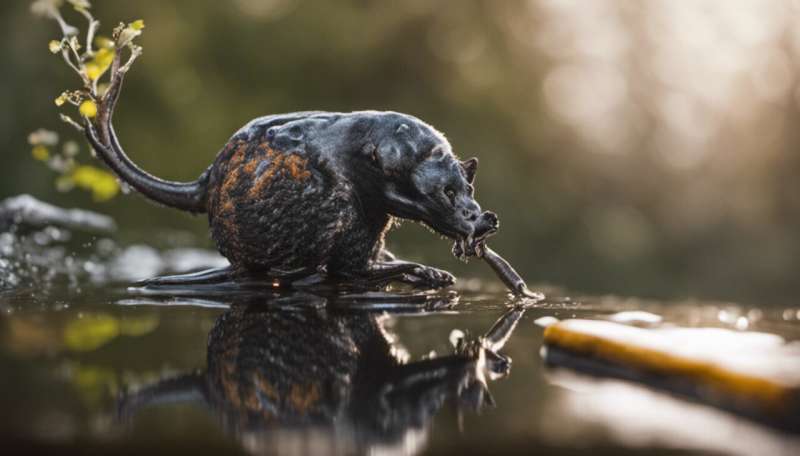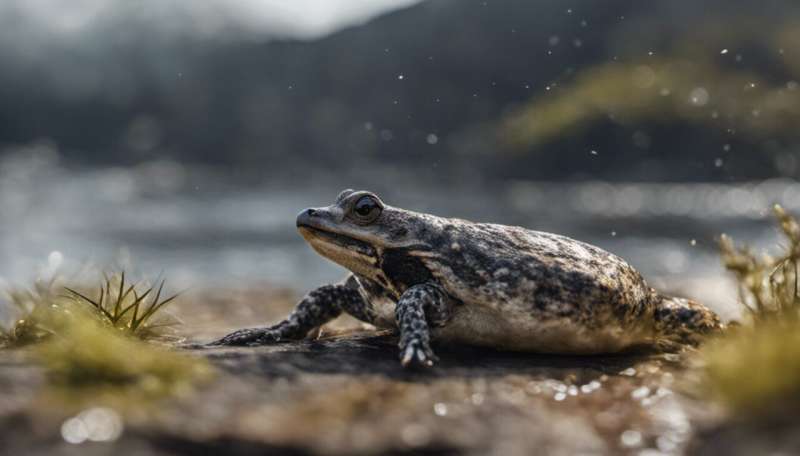This article has been reviewed according to Science X's editorial process and policies. Editors have highlighted the following attributes while ensuring the content's credibility:
fact-checked
trusted source
written by researcher(s)
proofread
Animals learn survival tricks from others, even if they live alone, finds researcher

Many animals live in groups. One of the main benefits of this is shared knowledge. This information can help animals tackle problems such as where to find food and mates, how to follow migration routes and how to avoid predators.
Other animals in the group are valuable sources of information. Rats, for example, learn which kinds of food are safe to eat by smelling it on the breath of other members of their colony. While Indian mynah birds learn about new predators through the distress calls of their companions.
These animals increase their chance of survival by following, copying and learning from each other. Learning from others in this way is what behavioral scientists call "social learning."
But many other animals prefer to spend their lives alone. Do these animals have to figure these problems out for themselves?
This is what I set out to discover in a recent review of the literature on social learning in solitary animals. It would appear that living alone is no barrier to learning from others. There are dozens of examples of social learning in solitary species of insect, octopus, fish, shark, lizard, snake, turtle and tortoise.
Social lives
This shouldn't come as a surprise. Solitary animals are not necessarily cut off from social contact. In fact, many live in rich social worlds awash with calls and scent cues from other animals—they also come into contact (and sometimes clash) with these animals regularly.
Just as those that live in groups acquire valuable knowledge from others, solitary animals can too.
One study found that wood crickets can learn to be wary by observing the behavior of other crickets that had recently encountered predatory spiders. Other research revealed that South America's red-footed tortoises can watch other tortoises to learn how to navigate around a barrier. And Italian wall lizards, a species native to southern and central Europe, copied trained lizards to learn which lid to remove to access a food reward.
Social learning can explain how behavior can spread through animal populations. Some species of grazing mammal, for example, share migration routes between critical feeding and breeding habitats. Understanding how social learning arises and develops can thus inform conservation and species management.

Social learning is also a key part of human culture. Understanding how animals share knowledge offers insights into how our own minds develop. But we still know comparatively little about the role natural selection and the early exposure to social cues play in shaping social learning.
Some animals learn better than others
Sharing knowledge is an important mechanism across the natural world, and many solitary animals are capable of it. But which animals pick up social cues the best? Most group-living animals will be exposed to social information more frequently than solitary animals, so may become more attuned to it either through natural selection or through experience.
Some scientists argue that social learning is the same as other kinds of learning at the cognitive level, except that the source of information happens to be another animal rather than some inanimate feature of the environment. However, it is possible that the sense organs and brain regions that are involved in gathering and processing social information may have been selected over many generations to be more attentive to social cues.
Research employs statistical techniques to look for evidence of natural selection among groups of related animals to see if factors such as living in groups are linked with other adaptations, like those related to cognition. One study that was conducted on primates showed that a measure of social learning was related to the size and complexity of their social groups.
Similar approaches could be applied to family trees that contain both group-living and solitary animal species (like behaviourally diverse groups of fish and insects) in the future. This would allow scientists to see if grouping not only affects how well an animal learns socially, but also the sensory and neural hardware behind it.
Early exposure
The amount of social exposure that an animal receives early on in its life may also affect how well it learns from others later on. The rats that learn about new foods from their den-mates do so by associating the smell of recently eaten foods with compounds that the rats breathe out. They acquire this skill as pups and learn to pair food odor with the smell of their mother's breath as she grooms them.
Remarkably, research finds that rats with inattentive mothers who groom them less as pups do not pick up the same ability to learn about foods from the breath of others.
By contrast, little is known about the importance of social exposure in young solitary animals.
Yet, while restricting social exposure might be unethical for animals that live in groups, this will not be the case for solitary species where limited social interaction is the norm. In experiments that manipulate early exposure to social cues, these solitary species can widen scientific understanding of how animals pick up the associations that lead to social learning.
Provided by The Conversation
This article is republished from The Conversation under a Creative Commons license. Read the original article.![]()




















